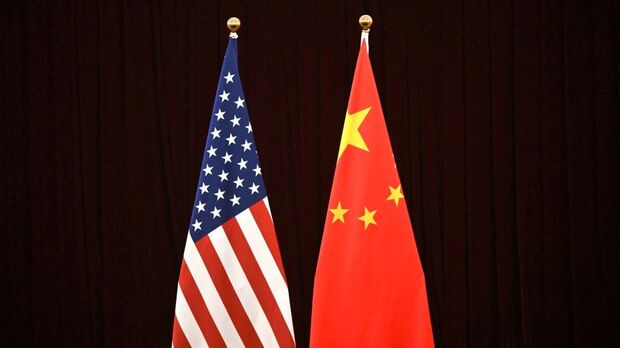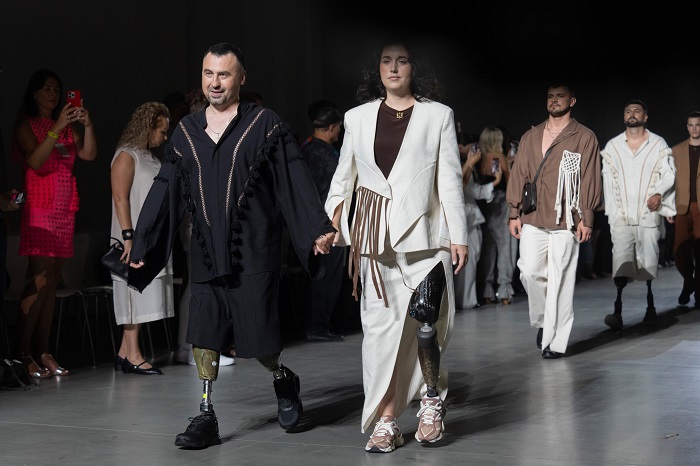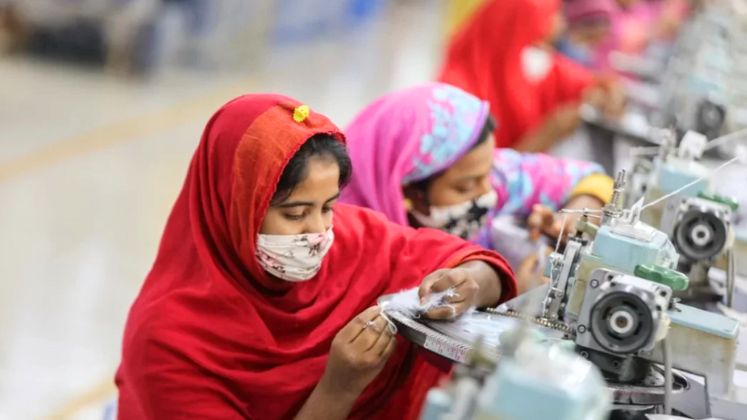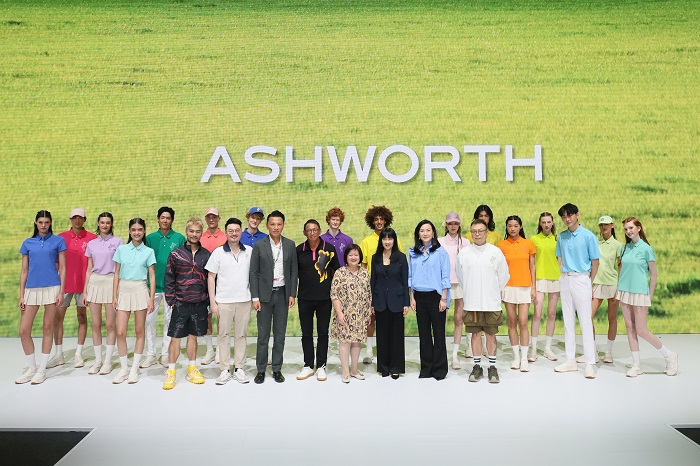FW
This July's editions of Interfiliere and Mode City Paris will share a common entrance bringing the two shows closer together. Visitors will see expanded offerings for buyers across the value chain for intimates, home wear and beachwear sectors. Interfilière hopes to give visitors a good knowledge and assist communication between the different layers of segments, so buyers and designers can better understand and communicate their design and retail needs to knitters, lace makers, embroiderers etc.
In terms of visual inspiration for trends, the general forum will take the forum of an art gallery to complement the key art and literature inspired trends for color ways and textures for intimates and beachwear.
For Mode City the focus is on beachwear. With buyers now looking as far ahead as summer 2016, there is a wealth of inspiration. Having acquired the American Curvexpo New York and Los Angeles trade shows, Eurovet wants to bring Europe and North America closer, firstly by creating a focus on US and Canadian brands but also attracting and supporting buyers from North America with special events, conferences and made-to-measure activities for these. Mode City will be unveiling 60 new brands from around the world.
www.lingerie-swimwear-paris.com/en/
Germany-based Terrot, a leader of circular knitting machine manufacturing, has taken over the insolvent Pilotelli Macchine Tessili. Terrot is a leading force in the production of electronically and mechanically controlled circular knitting machines worldwide. Terrot makes single and double, plain and jacquard circular jersey knitting machinery.
Italian builder Pilotelli, which opened in 1983, is especially known for its expertise in single-jersey technology and well-established global reputation with strong markets in Turkey and South America. Pilotelli covers both single jersey and double jersey circular knitting machines. It delivers approximately 1,200 machines every year globally for producing knitted fabrics, thus addressing a variety of applications as per the need of the end user. The cylinder is the heart of a circular knitting machine. With this reality, Pilotelli Machine decided in 2004 to start its own production of cylinders for the machines.
The acquisition has come about in order to meet Terrot’s growth strategy. At the same time it opens up new vistas for Pilotelli to recover its business from financial struggles in recent years.
 China's dragon-size textile industry is valued at $870 billion (Rs 50,95,590 crores) and its exports are estimated at $280 billion (Rs 16,39,960 crores). In the next 10 to 15 years, prediction is that China will exit textile manufacturing business leaving a huge gap for countries like India to take advantage. The question is, whether India would be able to compete with rivals leveraging all its strengths while overcoming weaknesses?
China's dragon-size textile industry is valued at $870 billion (Rs 50,95,590 crores) and its exports are estimated at $280 billion (Rs 16,39,960 crores). In the next 10 to 15 years, prediction is that China will exit textile manufacturing business leaving a huge gap for countries like India to take advantage. The question is, whether India would be able to compete with rivals leveraging all its strengths while overcoming weaknesses?
China, the textile manufacturing giant is showing all signs of moving ahead and away from being a manufacturing hub. In 2012, China’s share in the global textile and apparel trade dropped to $280 billion (Rs 16,39,960 crores) from $300 billion (Rs 17,57,100 crores) in the previous year. In 2013, growth in different textile segments, including yarn, fabric and apparel was down compared to the previous year. With a change in its famous cotton stockpiling policy, the country has decided to lower its cotton imports and clear the piled up stocks.
On the other hand, factors such as a rise in domestic consumption, Yuan going against the export sector and rising labour costs, are leading to importing countries looking at other sourcing options. And China is gradually losing its competitive edge. A country, like Japan, has already moved to producing more sophisticated products which require skilled labour and has begun outsourcing some of its basic textile jobs to Indonesia and Vietnam.
India needs to take a lead
Indian textile industry has everything going for it required to replace China, as a leading manufacturing hub. It has a wholly integrated industry from cotton production to manufacturing of yarn, fabric and garment, with its expertise not restricted to just cotton, but extending to silk, wool and synthetic fabrics as well.
leading manufacturing hub. It has a wholly integrated industry from cotton production to manufacturing of yarn, fabric and garment, with its expertise not restricted to just cotton, but extending to silk, wool and synthetic fabrics as well.
Experts point out that first and foremost, the industry should be able to push its $40 billion (Rs 2,34,280 crores) textile exports to $280 billion (Rs 16,39,960 crores) in the next 10 to 15 years. Since the textile industry is labour-intensive, manufacturing tends to get outsourced from countries having cheaper labour. So the big opportunity is knocking at the door for India.
If one looks back into the history of textile industry, the fact that always remained evident is that production always shifted from high-cost countries to low-cost countries. By the late 1980s, production of most textiles in the industrially developed countries, such as the United States, Western Europe, and Japan, became too expensive to compete with imports due to rising wages and production costs. A large portion of fibre, yarn, cloth, and garment production were relocated to less-developed countries with lower wages. When China exits manufacturing like other developed countries, India will have to competitively make headways into the emptied space.
Removing growth hurdles
To make sure, that everything works in its favour, India must keep tab of the potential of its competitors. While Turkey has integrated industry like India its production costs rising closer to European Union standards. Countries like Bangladesh and Sri Lanka are strong but only in specific segments like garments. Bangladesh, of late has been facing compliance issues, which may work in favour of Indian factories. Pakistan, on the other hand, despite having a large textile sector and GSP+ status from EU, is grappling with issues like power, adequate infrastructure, modern machinery, technology and skilled manpower as well as political instability and internal security concerns.
China is the largest buyer of Indian cotton and cotton yarn but when it cuts down purchases to consume piled up stocks, India will have to develop capacities in the upstream segments to absorb the produce so that the cotton and yarn producers will not have to face the fall in demand. India’s economic climate has not been favourable for investments. India does not even figure among the first 100 countries in the ‘ease of doing business’ list. European countries like Italy, Belgium and France which could have otherwise invested in advanced technologies, have stayed away from India. China too has started outsourcing parts of its production to other countries like Vietnam and Indonesia, but India has not yet benefited from this move. Issue of lack of skilled labour force also is another big issue. India is also a power-deficient country and the demand-supply gap has been widening every year.
Industry has also been demanding a technology mission for cotton to address issues related to better quality seeds, mechanisation at farm level and better agronomy research to help bring down the cost of production. Also increased investments are needed and TUFS has to restore the rate of interest reimbursement for spinners under the scheme to 4 per cent from the current reduced rate of 2 per cent to boost development of new factories. When the demand for cotton and yarn from China comes down, India will have to increase its cotton fabric production capacities. Also, compared to the garment sector in Bangladesh, India’s industry is highly fragmented with smaller-sized units. All these hurdles have to be overcome, for the industry to race ahead in the competition.
Despite protests and several meetings by Punjab's textile mills to increase power supply by 135MW, the government of Pakistan was unable to fulfill demand. Punjab-based textile mills on independent feeders face 10 hours a day loadshedding. Over 55 mills across the state are dependent upon power but according to the industry sources, the government has done nothing to meet a meagre demand of 135MW.
Though mill owners have been paying their electricity bills on time, the exorbitant power tariff is making their lives difficult as demands for a special tariff for Punjab-based textile mills are not being taken into consideration by the National Tariff Commission. Meanwhile, the government is pursuing textile millers to invest on coal-based power generation with an upfront tariff of 9.25 cents. The textile industry is unhappy with the government for forcing them to invest in power generation, either in the shape of Captive Power Plants or coal-based generation. They feel it is the government’s responsibility to ensure uninterrupted energy supply.
The current crisis has been negatively affecting electricity-dependent mills and now they have started blaming the CPP-led mills to ignore their demand for energy. Also the Supreme Court verdict about equal distribution of electricity among consumers has also impacted the power-dependent mills. The cost of energy per unit for gas-based mills comes around Rs 6.5 against Rs 14 per unit for the electricity-dependent mills, which further brings to fore, the vast disparity between the two sides.
After Taiwanese investors, now Hong Kong investors in Vietnam have threatened to hold their expansion plans if authorities don’t take quick action in maintaining law and order against protesting workers against China. Businessman and lawmaker Felix Chung Kwok-pan has said that at least one investor has already taken steps in the direction. One Hong Kong businessman who has invested $300 million in Vietnam is holding his plans of injecting another $100 million for now.
About 3,000 Chinese nationals have already been evacuated from Vietnam, following deadly rioting sparked by anger over Chinese oil drilling in a disputed area of the South China Sea. The geographical tension erupted after China deputed a 1 billion dollars oil rig in a part of the South China Sea. It is the worst breakdown in ties between the two Communist neighbours since a short border war in 1979.
Many Hong Kong businesses started to open up factories in Vietnam owing to low wages in the countries. At present, a worker in Vietnam gets paid an average of $200 to $300 a month, compared to $600 to $700 dollars in China. Manufacturing and exports accounted for 75 per cent of Vietnam’s economy in 2012, up from 56 per cent in 2009. The bulk of this manufacturing was funded by foreign investment.
The Bangladesh government has initiated a move to identify non-readymade garment factories and their establishments and create sector-wise database of those units. The database would have sector-wise factory information, names and addresses of such units, number of workers and other related matters. So far the government has established a database only for the garment sector.
There are more than 45 formal industrial sectors including the readymade garment in the country but there is no specific database or information on how many factories are running across the country with people employed there and their compliance status.
More than 600 garment factories are doing business without a DIFE (Department of Inspection for Factories and Establishments) license. About 800 factories are members of neither Bangladesh Garment Manufacturers and Exporters Association (BGMEA) nor Bangladesh Knitwear Manufacturers and Exporters Association (BKMEA). These 800 units are doing sub-contracting.
DIFE has made an appeal to those units that don't have DIFE license to immediately take approval. The formal industrial sectors included jute, sugar, ship breaking, carpet, etc.
Engineers of 26 US retailers and brands under the Alliance for Bangladesh Worker Safety have so far closed down one factory in Chittagong, a year after the Rana Plaza collapse killed 1,138 people. The platform has suggested the review panel close down five more garment factories.
The Alliance that started with seven teams on March 12 inspected 508 out of the 626 factories in Dhaka and Chittagong. Inspections would be complete by July 10. Alliance and Accord members have 300 common factories to buy clothes from. They have agreed to avoid repetition. The inspection reports, mainly on fire, electrical and structural integrity, found a lack of fire alarms and a need for better enclosure and maintenance of electrical wiring.
An inspection found several factories didn’t have fire doors and sprinkler systems. There was also evidence of cracking and a need for beam-column joint repair in a few places. Sometimes there was a wide deviation between the approved drawings and actual construction. One garment factory was overloaded with fabrics on several floors.
One suggestion is that at least one individual, the factory load manager, should be present at the factory full-time and trained in calculating operational load characteristics.
www.bangladeshworkersafety.org
A report by the Economies and Regions consulting firm says cotton production in the South American country of Argentina is expected to increase by 17 per cent to 750,000 tons during the current harvest season of 2013/14. Farmers are expected to sow cotton on 570,780 hectares of land, indicating an increase of 39 per cent against the last season. The report states that prices of cotton are also expected to escalate during July this year by 18 per cent.
As per the Economies and Regions report, the highest increase in cotton planting is expected in the Argentine province of Salta, with a rise of 190 per cent year-on-year, followed by Chaco province with 107.02 per cent. Meanwhile, cotton plantings in the Argentine provinces of Santa Fe, Entre Rios and Corrientes are expected to increase by 15.9 per cent, 5.9 per cent and 5.5 per cent, respectively, the report adds.
Cotton in Argentina is grown along the northeastern border of the nation, predominantly in the province of Chaco. Argentina’s cotton planting begins around the beginning of October and continues through the end of December. Harvest runs from mid-February through mid-July.
Austria –based fiber company Lenzing, has consolidated its group sales in the first quarter of 2014 fell by 9 per cent as against the same quarter of 2013. EBITDA margin dropped from 13.4 per cent to 10.2 per cent. The effect on net profit was a drop of 6.1 per cent. Fiber production plants are operating at full capacity, However fiber selling prices were almost 12 per cent less than in the same quarter of 2013.
Greater focus on specialty fibers proved successful. Most of all Lenzing generated good sales volumes for its specialty fiber Lenzing Modal, along with a continued attractive price premium compared to standard viscose fibers, thus surpassing the average of 2013. A stable price premium at the same level as in 2013 was also achieved for Tencel.
Lenzing is resolutely marketing its specialty fibers Lenzing Modal and Tencel, ensuring cash optimization. It’s striving to generate cost savings well above €60 million in 2014. These cost reductions are of a structural and sustainable nature and should continue generating comparable savings beyond 2015.
Lenzing has production units in all major markets and supplies to the global textile and nonwovens industry with high quality manmade cellulose fibers. The group registered new record volume sales in the first quarter of 2014.
www.lenzing.com/
Karl Mayer is expanding its multibar Jacquardtronic Lace series of machines with the incorporation of MJ 65/1B. The multibar Jacquardtronic Lace series also unveiled its MJ 42/1B machine at ShanghaiTex 2013. It was launched at the same time as the MJ 59/1B, the version with more guide bars. Both machines are based on the company’s extensive experience with tried-and-tested ML technology but, by equipping them with a jacquard bar, lean more towards the production possibilities of the Jacquardtronic Lace.
With their exceptional cost and benefit ratio, the models in the new MJ series give Karl Mayer’s customers considerable competitive edge and are therefore, in great demand. Spurred on by its success, the company has also been offering a high-bar option in the shape of the MJ 65/1B since December last year.
Increasing the number of guide bars has enabled an even greater range of patterns, full-width fabrics to be produced efficiently in the crosswise direction, and wide bands to be manufactured. The cost and benefit ratio of the MJ 65/1B has been optimised, which is said to make it an extremely attractive proposition for all lace manufacturers, both in the lingerie and outerwear sectors.












